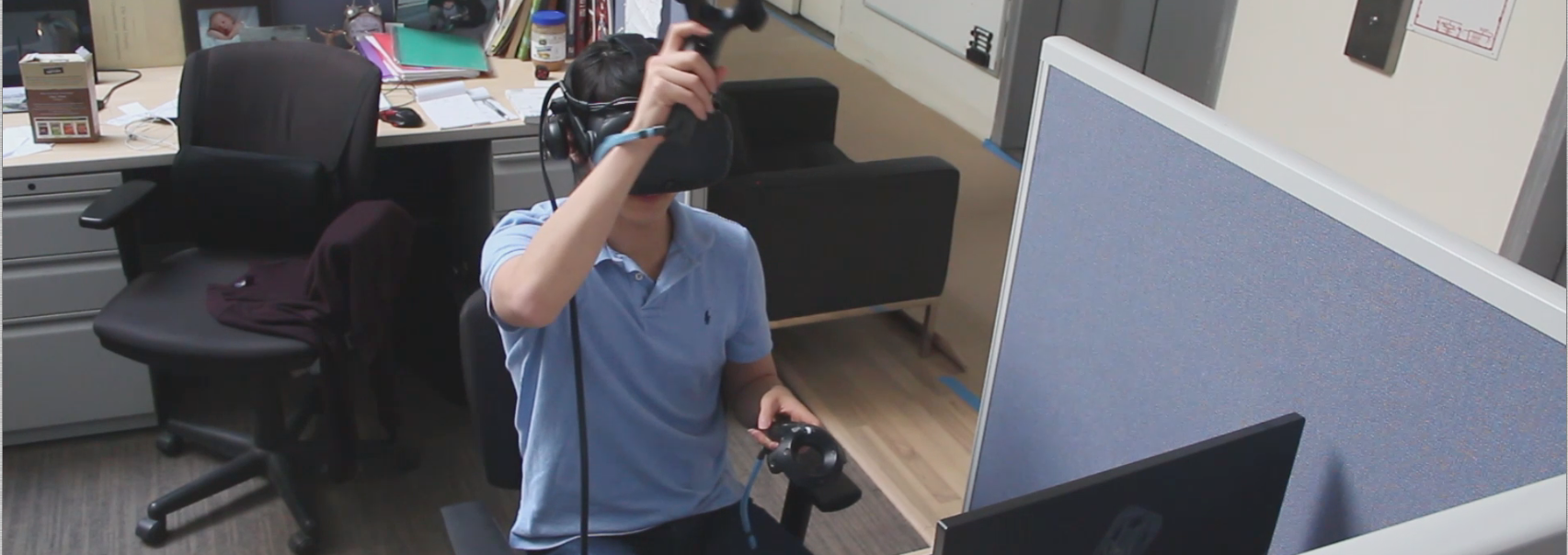
Articles
Editor’s Picks
Interviews
Project Chimera Uses VR to Put Remote Students in the Classroom
By Henry Kronk
May 21, 2019
With education in all forms today, classes tend to be either wholly online or wholly face-to-face. While some hybrid degrees are gaining in popularity in fields such as nursing and law, these mostly demarcate courses between remote and in-person. But what if the same class—and not just the same class content—could be taught to both in-person and remote students at the same time? Jimmy Giliberti, general manager of Number 9, a VR development company, has been thinking about scenarios like these for some time. Number 9 operates as a subsidiary of the Glimpse Group, an umbrella company that brings together VR and AR expertise across numerous fields. Along with another company, Foretell, Giliberti has recently developed Project Chimera, a VR presentation solution that brings together live and remote audiences and presenters in the same space.
“What we’re doing, and the interesting thing about Chimera, is it is the DNA of two entities being blended together into something new,” Giliberti said over the phone. “In essence, what we’re doing is capturing 3D 180º video (I could use 360º, but in this case, we’re using 180º), and grafting it into a computer-generated environment that allows people to participate in an event, or a class, or a presentation, virtually.”
How Project Chimera Works
In the intended setup, a teacher (or presenter) would speak from the front of the room to an audience comprised of IRL students (or attendees), a monitor showing remote students, and a 180º camera live streaming her remarks. The monitor shows a virtual classroom with virtual rows of chairs. In those chairs, graphic representations of remote students appear.
Those virtual attendees, wherever they are in the world, can stream in to the lecture via the Number 9 app and a pre-specified conference link, much like Zoom. Donning their VR headsets, they see what the 180º camera sees. Using their controllers, they can raise their hands, take notes, and gesture as they speak.
“We set up monitors in front of the presenter so they can see into the virtual world,” Giliberti said. “That way, it doesn’t affect their teaching. That’s one of the things we wanted to solve. We didn’t want to put an instructor in VR in a [purely] virtual space. There are social VR spaces, and it solves the issue of everyone being in the same place, and everybody being immersed, but it does affect your way of teaching.”
Provided that everyone involved has the right devices and software, an in-person peer could even use a tablet to see and interact with their remote counterparts. The technology is continuing to develop.
“Most of the stuff is already there to allow me to share a virtual object,” Giliberti said. “A typical example is, I’m in biology and I have the big honking scaled up version of a molecule. I could look at it, manipulate it, turn it around, and then pass it on to my peer. All those things you can’t do in real life, you’ll be able to do inside the virtual world.”
At the moment, Number 9 is prioritizing HTC Vive VR headsets and controllers. But Giliberti expects there will be new integrations available in the near term. The technology is still very new. In fact, their patent was only filed at the beginning of May.
For now, the company has reduced lag time down to three seconds, but Giliberti expects that will fall. In terms of data usage, it would have been considered heavy some years ago, but can be done with most North American mobile infrastructures today. The dual live streaming in 4K resolution pushes about 4 MB per second.
As the required hardware becomes more widely available, Giliberti imagines the uses of the technology will grow.
More Devices, More Remote Students and Teachers, More Possibilities
“The terms you’ll hear me use are ‘presenter’ and ‘attendee,” Giliberti said. “There’s the student-teacher relationship, but if you’re a VR evangelist, you can make any presentation both in-person and remote, and push that as well. It could be enterprise. Training is a great use of this technology. I could have someone showing how to use a particular type of machine.”
If everyone involved has a headset, there are even more possibilities.
“The instructor might say, ‘Ok, we’ve done this, we’ve just learned our lesson on Ancient Rome. Let’s go take a look,’” Giliberti said. “So everybody dons their headsets and watches 360º content as a class. Maybe there will even be another presenter streaming in.
“It isn’t just ‘If you’re local, you’re local.’ It’s ‘You’re local, but you have the same ability to interact with other people remotely. It just depends on how you define ‘remote.’ If you have a guide in Rome who is about to show you around, then everyone is remote.”
Media courtesy of Number 9 and Glimpse Group.









No Comments